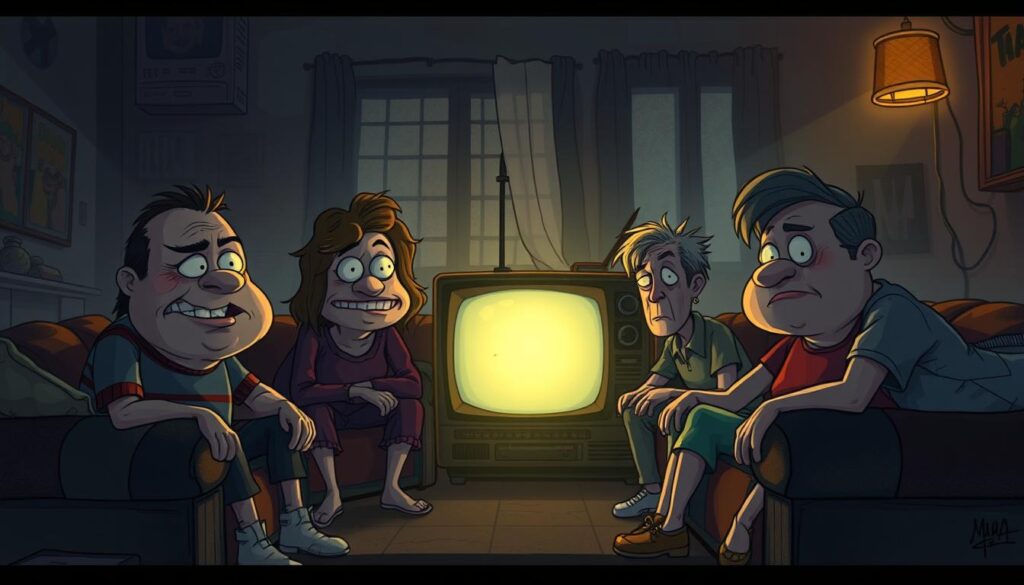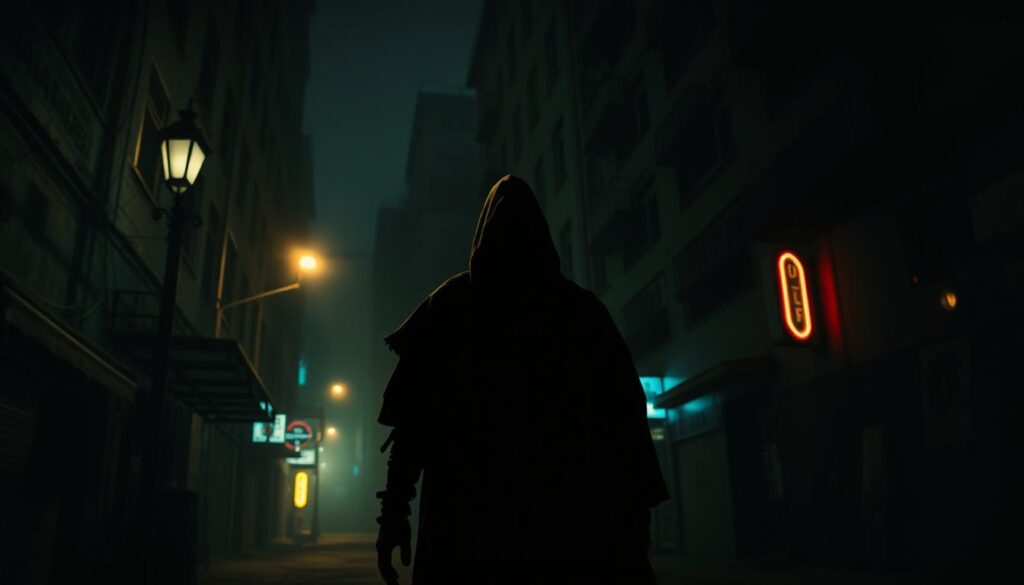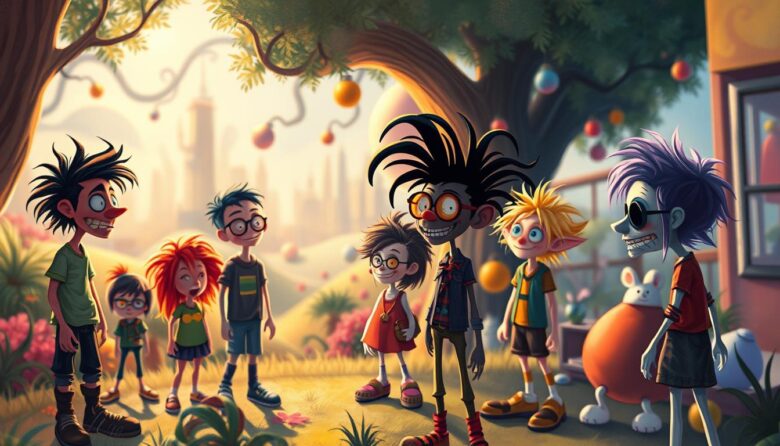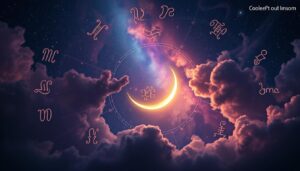Why do we love characters who don’t fit in? Stories of outsiders, like Walter White in Breaking Bad and Moony from Stranger Things, touch our hearts. They show us that being different is not something to be ashamed of, but a strength.
Books and movies feature misfits who challenge the status quo. They show us that being different can lead to change. These stories teach us about bravery, finding who we are, and the importance of being accepted. This article dives into why these tales are important and what they tell us about ourselves.
Key Takeaways
- Outsider characters highlight the human need for belonging and authenticity.
- Their struggles often mirror real-world issues like bias and identity.
- Stories of misfits inspire audiences to celebrate uniqueness.
- These characters push society to question outdated rules and values.
- Their resilience shows how individuality can drive progress and empathy.
Understanding the Appeal of Misfit Characters
Characters that don’t belong grab our attention. They challenge the norms and spark curiosity. Their stories ask: what happens when someone refuses to follow the rules?
The Role of Social Contrast in Storytelling
Stories need conflict, and misfits provide it. When they defy expectations, tension builds. Think of Walter White from Breaking Bad or Eleven from Stranger Things. Their differences drive the story forward.
The Emotional Connection with Outcasts
People connect with misfits because they see themselves in them. Many have felt like outsiders. Misfits’ struggles and victories resonate with us, making their stories satisfying.
Misfits as Symbols of Change
Misfits often signal important changes. Their defiance can mirror big movements. Think of The Hunger Games’ Katniss, who challenges oppressive systems. Their stories ask: what’s worth fighting for?
Iconic Misfit Characters in Literature and Film
Misfit characters have become big in both books and movies. They show us what it means to be different through their stories. These tales of struggle, growth, and breaking rules are still important today.
From Holden Caulfield to Eleven
Holden Caulfield, from Catcher in the Rye, was a teen who didn’t fit in with the 1950s. Then there’s Eleven from Stranger Things, a girl with special powers hiding in a lab. Both characters challenge what’s expected of them, but in different ways.
Classic misfits like Harry Potter and Forrest Gump faced being left out. But today, characters like Rue from Hunger Games mix rebellion with modern themes.
The Evolution of the Misfit Archetype
Early misfits often wanted to be accepted. Now, they celebrate being different. Let’s compare the old and the new:
| Classic | Modern |
|---|---|
| Holden Caulfield | Eleven |
| Internal doubt | Proactive defiance |
| Isolation | Community-building |
Why They Resonate Today
Today, people connect with misfits who stand up for themselves. They show us the value of being true to oneself in a world that wants everyone to be the same. We root for characters like Eleven and Walter White because they show us the power of fighting back against the system.
The Psychology Behind Our Fascination with Outsiders
Why do we love stories about misfits? Psychology gives us answers. These characters mirror our deepest fears and dreams. They teach us about staying strong and finding who we are—important lessons in learning from outcasts.
Humans need to belong, a basic need as Abraham Maslow showed. Misfit characters show this struggle. For example, Eleven from Stranger Things fights for acceptance, showing how being alone shapes who we are.
The Human Need for Belonging
Feeling lonely is bad for our minds. Outcasts in stories remind us of our need for connection. Watching their struggles makes us face our own fears of being left out.
Empathy and Identification with Characters
- Walter White from Breaking Bad shows us our own fears of losing who we are.
- Star Wars uses characters like Rey to encourage us to be ourselves.
The Struggle Against Conformity
| Concept | Theory | Example |
|---|---|---|
| Conformity Resistance | Asch’s experiments | Shows like Black Mirror question our society |
| Identity Formation | Erikson’s stages | Eleven’s growth in Stranger Things |
| Psychological Growth | Roger’s Self-Theory | Walter White’s change |
Learning from outcasts teaches us to question the norms. Their stories show us that being true to ourselves is brave, even when others disagree.
Lessons from Misfit Characters
Every misfit story reflects our own lives. They teach us to see flaws as strengths and isolation as a path to growth. Their struggles show us that society’s “norms” don’t define our worth. Here’s what they reveal:
“To be yourself in a world that is trying to make you be something else is the greatest accomplishment.” — Ralph Waldo Emerson
- Embracing uniqueness in characters starts with self-acceptance. Characters like Matilda’s book-loving girl or Dead Poets Society’s students rebelling against rigidity prove that authenticity fuels purpose. Their stories urge us to ask: What would you do if you weren’t afraid of judgment?
- Resilience turns setbacks into superpowers. Take Walter White’s transformation in Breaking Bad or Wonder’s Auggie Pullman. Their battles show how perseverance shapes identity. Every challenge becomes a chance to redefine limits.
- Questioning norms sparks progress. From To Kill a Mockingbird’s Scout to Stranger Things’ Eleven, these characters disrupt the status quo. Their defiance reminds us: change begins when we dare to ask “Why?”
These lessons aren’t just for heroes—they’re blueprints for real life. Misfits aren’t just storybook rebels; they’re teachers urging us to grow beyond labels.
The Cultural Significance of Nonconformists
Nonconformist characters do more than entertain. They start important talks. They show us that diversity is not just a passing trend. It reflects real-life issues we face.
How Misfits Reflect Societal Issues
Stories like Black Panther and Moonlight tackle big topics. They explore race, identity, and power through nonconformist characters. These tales give a voice to those often overlooked.
They highlight the importance of nonconformity in storytelling. Characters who break the mold make us think about our own lives.
The Role of Diversity in Media
Shows like Master of None and Orange Is the New Black bring diverse stories to light. They show the struggles of underrepresented groups in a way we can relate to. This diversity is not just welcome—it’s crucial.
By focusing on nonconformists, creators:
- Challenge stereotypes
- Showcase varied experiences
- Create role models for marginalized communities
Empowering the Underdogs
Characters like Rue from The Hunger Games show us strength. Their stories inspire us to be ourselves. As Ava DuVernay said, “Representation matters—it’s how we see our shared humanity.”
Misfits in Popular TV Shows
Television has long been a stage for outsiders who challenge the norm. Shows like Better Call Saul or Stranger Things turn misfits into heroes. They reflect society’s fascination with outsiders. Their stories mirror our own struggles to belong.

Iconic Examples from Television History
- Walter White (Breaking Bad): A chemistry teacher turned meth kingpin, his transformation shows how outsiders redefine power.
- Abed Nadir (Community): His pop-culture-obsessed character turned self-aware humor into a cult favorite.
- BoJack Horseman: A washed-up actor’s self-destructive journey made audiences question fame’s cost.
Viewers’ Reactions and Impact
Fans buzz with theories about Walter’s morality or Abed’s meta-humor. Social media trends like #BoJackHorsemanRealism show viewers see themselves in these characters. Networks now greenlight more shows about outsiders, proving their lasting appeal.
“Misfits aren’t just characters—they’re mirrors,” said critic Lena Torres. “They force us to see what society ignores.”
Character Development
Shows follow outsiders’ growth from outcasts to icons. Walter’s descent into darkness, or Abed’s journey from outsider to leader, shows TV turns rejection into triumph. These arcs remind us that being different can drive change.
The Connection Between Misfits and Creative Genius
Lessons from unconventional heroes show us a key truth: those who break the mold often lead to big breakthroughs. People like Nikola Tesla and Frida Kahlo didn’t just live outside the norm; they changed it. Their stories teach us that creativity grows when we question the rules.
“The truly creative mind in any field is no more than a child who has never lost his hunger for wonder.”
— Rollo May
How Outsiders Often Shape Innovation
History’s biggest changes often came from those who were once outsiders. Tesla’s fight against Edison led to AC power systems. Kahlo’s self-portraits turned her pain into a new art form. These stories are more than just tales; they are guides for innovation.
Examples of Real-Life Innovators
| Innovator | Breakthrough | Unconventional Approach |
|---|---|---|
| Nikola Tesla | AC Electricity | Rejected Edison’s DC dominance |
| Frida Kahlo | Surrealist Art | Merged pain with political symbolism |
| Marie Curie | Radium Discovery | Pursued science in male-dominated fields |
| Steve Jobs | Apple’s User-Friendly Tech | Blended design with engineering |
The Relationship Between Nonconformity and Creativity
Nonconformity isn’t just about rebelling; it’s a way of thinking. Lessons from unconventional heroes show us that creativity blooms where expectations and dreams meet. Curie’s determination in a male world led to groundbreaking discoveries. Jobs’ dismissal from Apple sparked NeXT, which later revived Apple. These examples prove that stepping outside the norm is not just allowed; it’s necessary.
The Impact of Misfit Characters on Youth
Young people often find themselves in characters who break the mold. Shows like Stranger Things and books like Hunger Games show teens they’re not alone. These stories teach that being different is a strength, not a weakness.
Role Models for Younger Generations
- Characters like Eleven (Stranger Things
- Harry Potter
- Katniss Everdeen
These characters show that being different doesn’t hold you back. They teach teens to solve problems and accept themselves.
The Importance of Representation
73% of teens say media misfits help them feel less alone (2023 Youth Media Study).
Seeing heroes who are different—like those who are neurodivergent, LGBTQ+, or introverted—makes teens feel seen. This representation boosts their confidence and opens their eyes to new possibilities.
Navigating Identity and Belonging
Stories about misfits teach teens to find their place without losing themselves. They learn to ask: Who am I? and Where do I belong? without fear. Shows like Steven Universe and Euphoria show how to balance these questions.
The Dark Side of Misfit Narratives
Every story has two sides. While misfit characters inspire, their tales sometimes hide darker lessons. This section explores the risks in how misfit narratives are told.

The Risk of Romanticizing Isolation
Stories often frame loneliness as a badge of honor. But glorifying isolation ignores its real cost. Here’s what’s missing:
- Ignoring mental health struggles
- Overlooking the need for human connection
- Turning pain into a “cool” lifestyle
Balancing Strengths and Vulnerabilities
Characters shouldn’t be all hero or all victim. A fair balance looks like this:
| Strengths | Vulnerabilities |
|---|---|
| Innovative thinking | Trust issues |
| Defiance | Social rejection |
| Passion | Emotional overwhelm |
Misfits in Tragic Stories
Some stories end in downfall. These examples show the cost of rebellion:
| Character | Work | Outcome |
|---|---|---|
| Walter White | Breaking Bad | Death and moral ruin |
| Anakin Skywalker | Star Wars | Loss of identity |
| Cayden Avery | Stranger Things | Tragic choices |
These tales remind us that defiance can lead to pain as easily as pride.
Conclusion: What We Learn from Misfits
Misfit characters like Eleven from Stranger Things or Holden Caulfield in The Catcher in the Rye teach us that being different is not weak. Their stories show how outsiders can challenge norms and bring about change. By following their paths, we learn valuable lessons about ourselves and others.
Celebrating Uniqueness
Characters who break the mold prove that being different is a strength. They teach us about resilience and creativity. Their stories encourage us to value being unique. Brands like Nike or Apple also celebrate individuality in their ads, showing how it drives progress.
Building a More Inclusive Society
Misfits make us think about stereotypes. The rise of diverse media, like Queer Eye or Euphoria, shows our growing need for inclusivity. These stories teach us that fairness begins with listening to all voices, not just the mainstream.
The Lasting Impact of Misfit Characters
Stories of outsiders have a lasting impact. They inspire real-world movements, from LGBTQ+ rights to mental health awareness. By seeing characters like Eleven or Matilda succeed, we learn that resilience and courage can change what’s possible.
These characters are more than just plot devices—they’re mirrors. They reflect our own dreams of belonging while staying true to ourselves. Their stories remind us that progress comes from embracing diversity, not hiding it. Let their stories inspire us to listen, learn, and support those who dare to be different.



